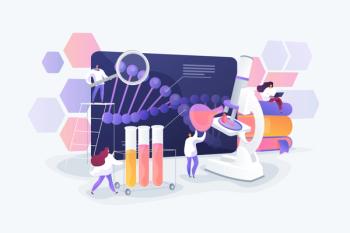
Routine genomic screening in healthcare promising
Similar to population screening of newborns for over 30 genetic conditions, routine genomic screening for all patients is becoming increasingly viable.
Similar to population screening of newborns for over 30 genetic conditions, routine genomic screening for all patients is becoming increasingly viable.
“The technology is not a barrier for universal screening in the United States. It is readily available,” said Michael Murray, MD, director of clinical operations for the Center for Genomic Health at Yale School of Medicine. “And some consumers are ready to personally bear the cost of between $300 and $800 per person.”
Dr. Murray noted that 82% of people with the genes BRCA1 and BRCA2, which are risks for breast, ovarian and fallopian tube cancer, were only identified through a genetic screening project in a
“However, for genomic screening in general, we need to make this endeavor operational for interpreting data and obtaining evidence to support such screening projects,” Dr. Murray told Contemporary OB/GYN. “There definitely needs to be more research to backup this kind of a strategy.”
In an ideas and opinion
To date, 200,000 research adult patients at Geisinger have been genetically screened for 76 genes and 27 conditions. “But we are still at the evidence-gathering stage,” said Dr. Murray, who previously served as director of clinical genomics for Geisinger.
Meanwhile, there are private companies selling consumers DNA screening, independent of healthcare. “That data is valuable in understanding what evidence is out there,” Dr. Murray said. “However, data are typically not available to the people who are building the evidence base outside of those companies. It would be helpful if that information is shared and understood for initiating public clinical programs.”
Nonetheless, it appears that companies providing consumer screening underestimate the value of input from healthcare providers for practical implementation. Additionally, many health systems and insurers are reluctant to incorporate insightful consumer data into patient care.
Still, an example of data generated outside healthcare which is valuable and embraced by a healthcare setting is a home pregnancy test. In fact, a positive test result is shared with a provider millions of times a year. But when the same woman offers genomic screening results, it is considered novel and its handoff is not well established.
The industry goal is to start with a screening program for 10 to 100 genes, then expand the list as knowledge and experience increases. For context, roughly 3.5% of volunteers of the Geisinger GenomeFirst project will receive clinical results from a list of 76 “actionable genes.”
“Early case reports show that this approach can identify subclinical disease and prompt important medical interventions,” wrote Dr. Murray in his opinion article, adding that conservatively at least 1% of the U.S. population has an identifiable genetic risk for cancer or heart disease.
Dr. Murray said it is reasonable to expect that in the 21stcentury, the actionable gene list will enlarge to include most, if not all, of a human’s 20,000 genes.
“If everyone’s goal is to achieve better outcomes, then functioning implementation models need to be developed,” Dr. Murray said. “Patients should also expect models for handoff from consumers to healthcare.”
Disclosures:
Dr. Murray reports no relevant financial disclosures.
Newsletter
Get the latest clinical updates, case studies, and expert commentary in obstetric and gynecologic care. Sign up now to stay informed.









